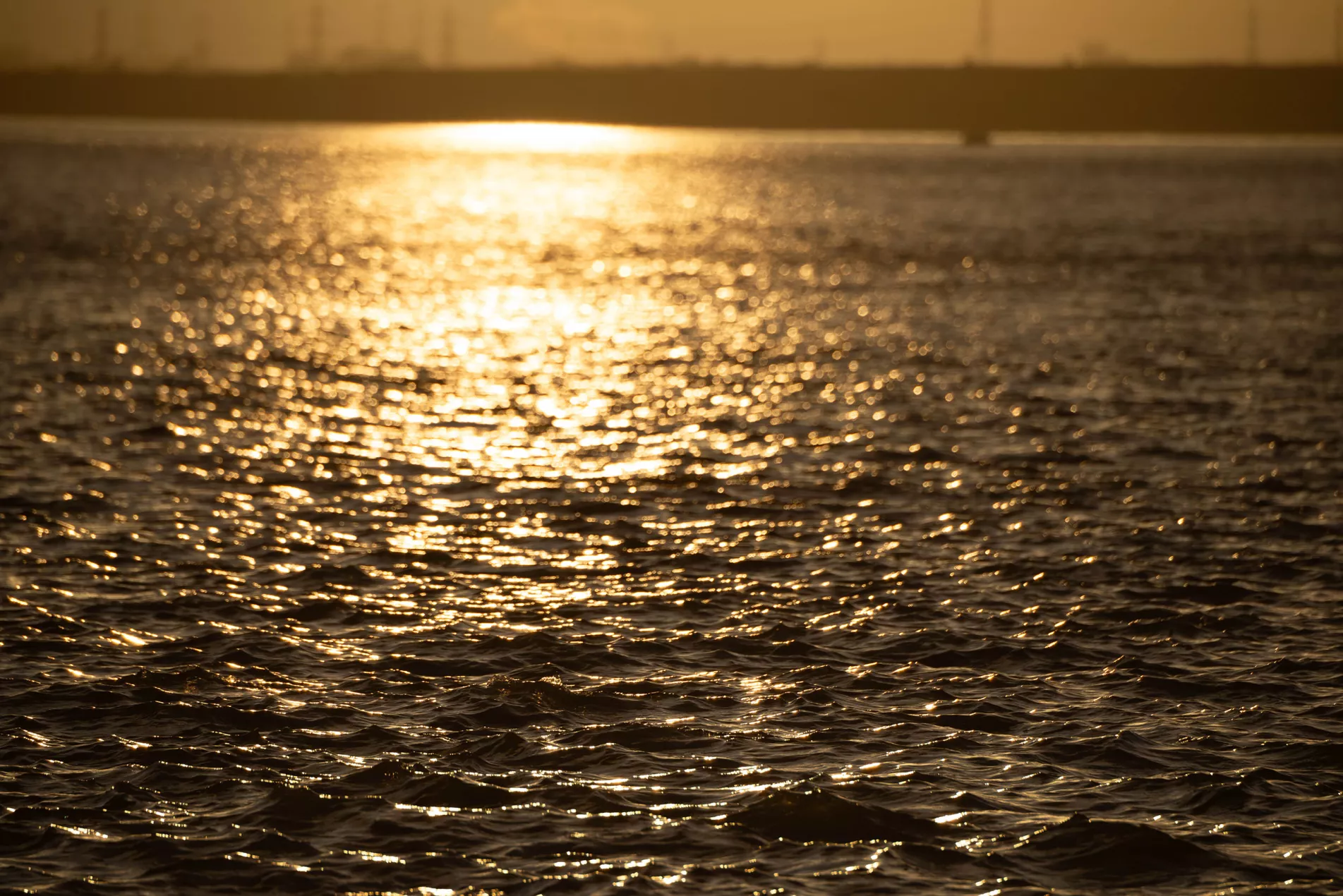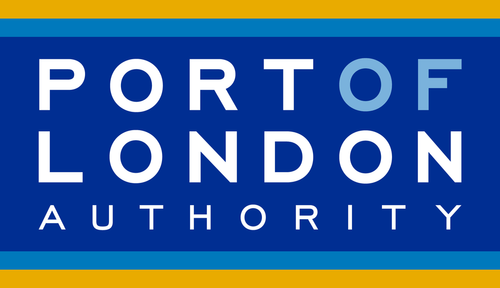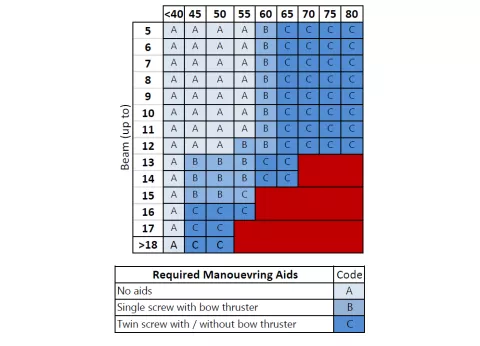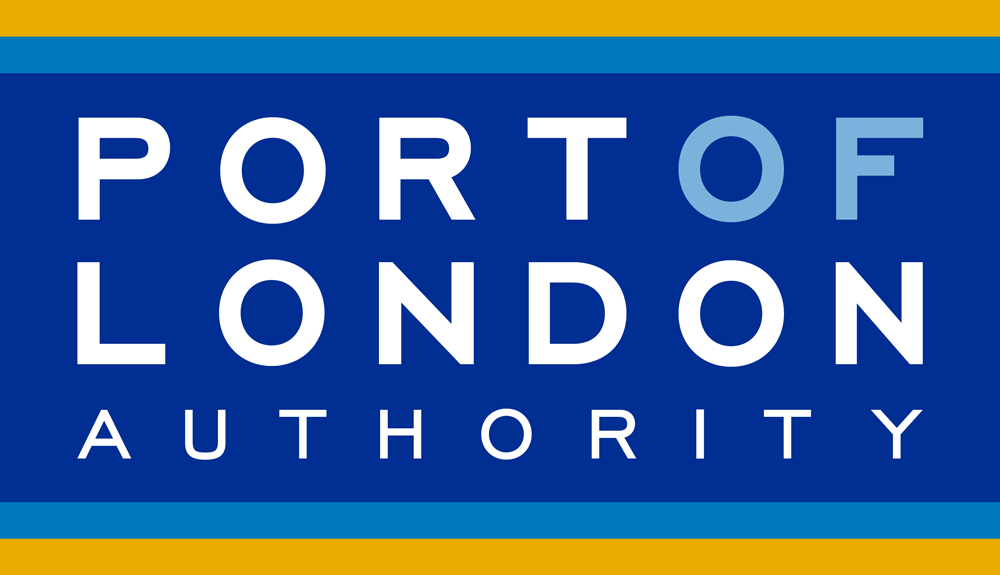Live Tides
NOTICES TO MARINERS
Charts & Surveys
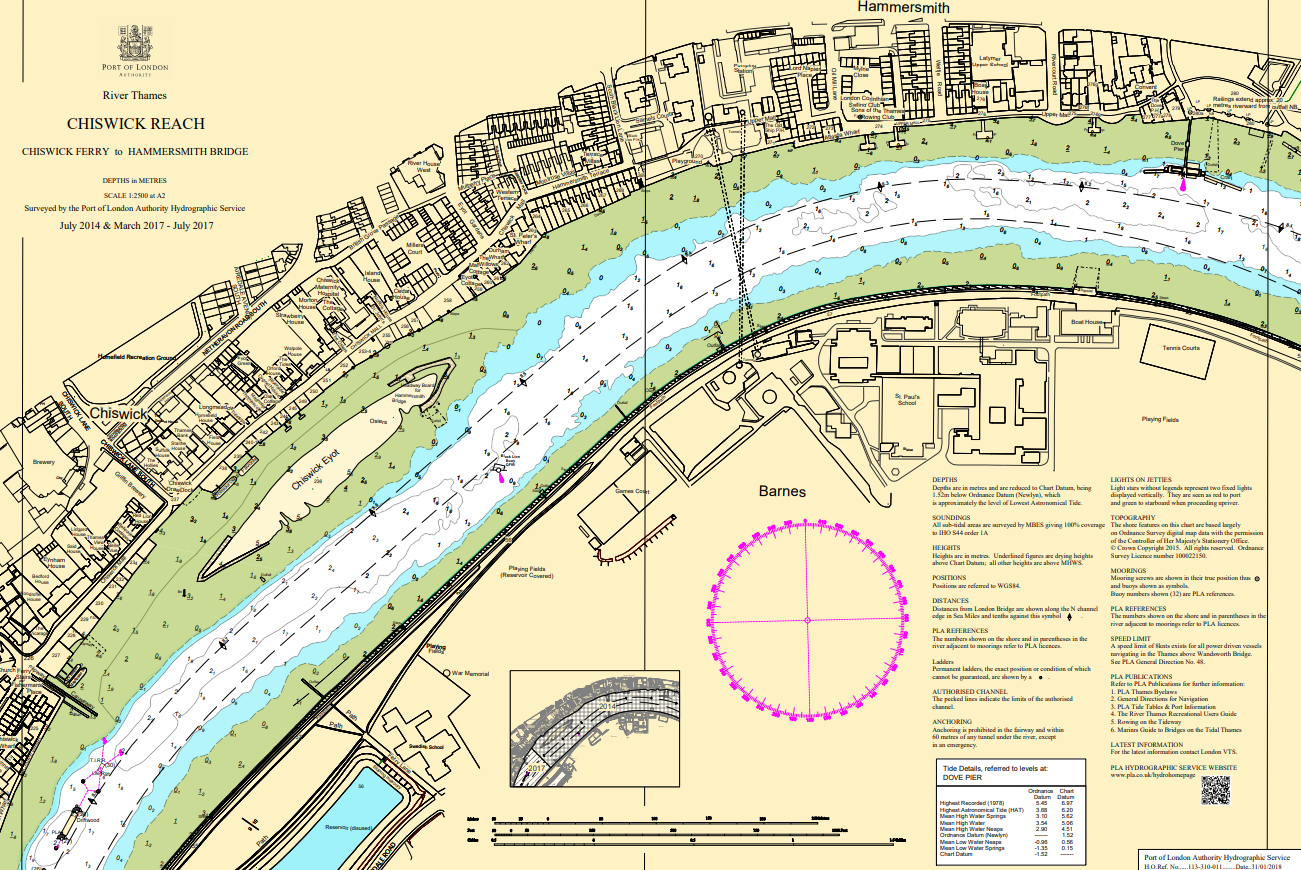
Incident reporting
Life-threatening emergencies on the river:
Call 999 and ask for the Coastguard
For near miss, safety observations and incident reporting click below
Code of Practice for Craft Towage Operations on the Thames
Introduction
This Code of Practice for Craft Towage Operations was published on 1st November 2025
It is intended to provide comprehensive guidance and advice on the conduct of craft towage on the tidal Thames.
For the purposes of this Code, the term craft encompasses a wide range of both routine and non-routine towage operations, including but not limited to dumb barges, jack-ups, dead-ship vessels, and various project-specific tows.
The towage and manoeuvring of large, often unwieldy dumb barges—whether unladen or heavily laden with diverse cargoes or specialist equipment—on the tidal Thames is a highly skilled and specialised operation. Successful execution requires a thorough understanding of the river’s unique tidal and navigational characteristics, particularly within the central London section. Equally critical are the technical knowledge and seamanship skills necessary to operate tug and tow combinations safely and effectively within a busy and complex port environment.
This Code is primarily intended for the guidance of Tug Masters, tug crews, and all parties involved in or associated with craft towage operations. It may also be of interest to other river users, offering insight into the specialised nature of towage activities and, where applicable, the navigational constraints that tugs and their tows may encounter.
Save by practice of law, the Port of London Authority shall have no liability in respect of this Code of Practice.
SECTION 1 - RESPONSIBILITIES
1.1 VESSEL OPERATOR
Vessel operators should:
- Comply with their obligation under the Health and Safety at Work Act 1974, as amended, and the regulations associated with this legislation. This includes the requirement for a clear Health and Safety Policy which is available to crew.
- Develop and implement an appropriate Safety Management System which manages any risks associated with their specific operation.
- Ensure that risk assessments are properly completed and regularly reviewed to ensure that any identified risks are sufficiently mitigated. The implementation of any identified mitigations should be carefully monitored.
- Ensure that any incidents or near misses are investigated to identify the root cause and prevent recurrence. Such incidents should also be reported to the PLA and any other relevant authority.
- Develop an appropriate safety culture, ensuring crew are properly trained in the application of the Safety Management System.
1.2 TUG MASTER
The Master of a vessel at all times has responsibility for the safety of his/her vessel, crew and of any vessels being towed. The Master has the authority to make decisions affecting the safety and conduct of the tug, crew and any craft under tow. Due to the hazardous nature of towing, Tug Masters (and crew) should ensure that:
- All onboard pre-sail checks are completed before getting underway;
- Any risk assessments required are completed and applied before engaging in towage operations;
- All crew are fit, have correct PPE and are correctly trained for the task to be carried out;
- Crew are properly briefed on the work to be carried out;
- Good communication is established and maintained between the Tug Master and crew at all times during towing operations;
- Towing gear is in good condition and prepared for use (towing equipment should be inspected both before and after towage operations; and
- All watertight hatches and doors are operated in accordance with onboard procedures.
- A passage plan is completed for the intended voyage which considers all ephemeral information.
1.3 TOW MASTER
A Tow Master must be appointed for all Non-Routine Towage Operations (See Section 3). The Tow Master must be a person suitably qualified and experienced to take on the role and must be identified and appointed by the principal Vessel Operator (towage contractor) before planning for the Non-Routine Towage Operation commences.
- The Tow Master (who may also be the Tug Master) has the following roles and responsibilities:
- Overall responsibility for the safety and the conduct of the towage operation;
- Co-ordinating the planning, preparation and rehearsal(s) for the towage operation;
- Submit a comprehensive risk assessment, towage plan & passage plan for the entire operation to the Harbourmaster within the appropriate timeframe.
- Determining the proposed manning and competency requirements for all personnel (excluding any Pilots) involved in the operation; and
- Ensuring that a proper record and audit trail of the planning and approval process, and the operation itself, is maintained.
1.4 PILOT
Where a Pilot is allocated to a craft towage operation, the Pilot has the following role and responsibilities:
- Notwithstanding the responsibilities of the Tug Master and/or Tow Master, taking conduct of the navigation of the tug and tow(s) as required by the Pilotage Act 1987, and further in the Port of London Authority Pilotage Directions;
- Immediately informing the Harbourmaster via London VTS, if necessary, of any aspects of the towage operation that give the Pilot cause for concern;
- Acting as the PLA’s representative on board, undertaking a liaison role on behalf of the Harbourmaster as circumstances require; and
- Providing support to the Harbourmaster in the planning, risk assessment and rehearsal(s) for any Non-Routine Towage Operations.
1.5 HARBOUR MASTER
- Review risk assessments and passage plans as required by Section 1.1 of this Code. Such reviews will verify that a risk assessment and passage plan have been adequately completed, but do not verify the veracity of such documents.
- Determine the requirements for PLA services including, but not limited to, the provision of pilotage, traffic management or harbour service launch escorts. Charges for such services will be for the owner’s account.
- Provide written permission for a towage operation to proceed.
Notes:
- In all cases, the Tug Master has the command of and is responsible for his vessel and crew
- The Pilot and Harbourmaster are not responsible for the towage plan and risk assessment or for the conduct of the towage operation. This must be completed by, or on behalf of, the Tow Master.
- A checklist is available to Pilots to aid the Master/Pilot Exchange for towage operations.
SECTION 2 – REGULATIONS AND OPERATIONAL REQUIREMENTS
2.1 OVERVIEW
Navigation on the tidal Thames requires adequate planning and risk assessment. The hazards vary dependent on location and it is important that these are always considered during the planning of a towage operation.
The Port’s marine safety management system recognises these issues and, as a result, the PLA has in place several regulations concerning towage operations throughout the tidal Thames.
This Code does not seek to reproduce or replace PLA regulations but provides further guidance on how safe operations may be completed. All the regulations quoted here should be available to and be understood by all those involved in craft towage operations.
2.2 PRINCIPAL REGULATIONS AND REQUIREMENTS
The principal regulations affecting the navigation of craft towage tugs that should be held onboard the vessel are:
- The Port of London Thames Byelaws - these set out detailed local requirements for operating vessels including modifications to the COLREGS, Reporting Incidents, Duties of the Master, Mooring and Berthing, Steering and Sailing, Light and Shapes, Sound Signals and Towing and Pushing rules.
- General Directions for Navigation in the Port of London - These contain more detailed regulations applicable to the Master of a vessel on the conduct of navigation; for example, the use of VHF and Special Signal Lights.
- Pilotage Directions – These directions set out the requirements of vessels to be under the conduct of an authorised pilot and how a person or vessel may become exempt or excepted from those requirements.
- Notices to Mariners – These time-limited documents provide pertinent information which must be considered by any Master planning a passage on the tidal Thames.
- PLA Tide Tables– a useful guide, which summarises much of the information above, and includes additional navigation information such as VHF Reporting Points.
2.3 PLA PILOTAGE REQUIREMENTS
Dependent upon the length overall of a tug and tow, the length of the towed object or the location of a tug and tow within the tidal Thames, some craft towage operations may be subject to compulsory pilotage requirements as required by the Pilotage Directions for the Port of London. Dependent on the nature of the operation, some non-routine towage operations, which are not subject to compulsory pilotage under the Pilotage Directions due to their length and/or breadth, may still be required by the Harbourmaster to take one or more Pilots (Pilotage Direction 6 refers). Vessels engaged in Non-Routine Towage Operations which are subject to compulsory pilotage may be required by the Harbourmaster to take an additional Pilot.
2.4 VESSEL LICENSING REQUIREMENTS
Craft towage tugs operating on the tidal Thames are required to be licensed under the Port of London Act 1968 (as amended). However, alternative national certification may also be accepted in lieu of PLA licensing. Vessels licensed by the PLA are inspected and licensed under the requirements of the Thames Freight Standard or the Inland Waters Small Passenger Boat Code.
For further information please contact the PLA vessel licensing department, email: [email protected]
2.5 ANCHOR ARRANGEMENTS
All craft towage operations on the Thames should be provided with appropriate anchoring arrangements (Thames Byelaw 18 refers). In particular, tug and barge combinations that involve pushing ahead or towing alongside should be provided with an effective bow anchor or stern anchor as appropriate. In most cases, during pushing and towing alongside operations, use of the tug’s bow anchor would be inappropriate and either a bow anchor should be provided on the barge, in the event of pushing operations, or a stern anchor should be provided on the tug or barge when towing alongside.
2.6 ARRANGEMENTS ABOVE CHERRY GARDEN PIER
Tugs & barge combinations which involve pushing ahead or towing alongside, navigating above Cherry Garden Pier where the length overall of the tug and barge combination exceeds 50m, should be provided with both bow and a stern anchoring arrangements.
Operators of tugs and barges, where barges are towed astern of the tug above Cherry Garden Pier and the combined length of the tug and barges (excluding the towing medium) exceeds 50m, must submit a formal risk assessment to the PLA to address the anchoring arrangements of the tow combination. Operations will typically require stern anchors on towed barges unless a twin-screw tug is utilised, supported by an extensive engineering maintenance regime.
2.7 TOWING THROUGH THE THAMES BARRIER
Upon entering the Thames Barrier Control Zone, vessels intending to navigate through the Thames Barrier will be allocated a span by London VTS. When navigating a span where the adjacent gate is in the 'defence' position, Masters should be aware that a cross current or eddy may be experienced.. This arrangement sets up eddies around the piers either side of the closed span, which can affect vessels transiting the adjacent spans, particularly tugs and tows and less manoeuvrable vessels.
When towing craft through the Thames Barrier, Tug Masters should ensure that:
- the tow is kept under close control, adjusting the tow line if necessary;
- additional care is taken when passing through the Barrier; and
- when towing 3 or 5 barges, the craft are arranged with either 2 or 3 barges in the front rank, with the tow balanced by positioning the second rank (comprising either 1 or 2 barges respectively) centrally.
When navigating against the tide through the Thames Barrier, Tug Masters must ensure that their vessels are capable of maintaining a safe speed through the water so as to have full control of the tow and be able to pass through the Barrier safely. Tugs should typically be able to maintain a speed not less than 3 knots over the ground when navigating the Thames Barrier. When preparing a passage plan that includes a transit through the Barrier, Tug Masters should take into account the expected tidal conditions, predicted increase in tidal flow through the Barrier and the estimated speed of the tug and tow, to ensure that the vessel can safely navigate the Thames Barrier, before leaving the berth.
2.8 SIZE LIMITATIONS AND PROPULSION REQUIREMENTS ABOVE LONDON BRIDGE
The PLA together with industry, undertook a detailed navigational risk assessment of towing operations above London Bridge which particularly considered pushing and towing alongside operations. These limitations can be found in Annex 1.
2.9 WHEELHOUSE VISIBILITY – PUSHING OPERATIONS
Due to the number and density of small craft navigating above London Bridge it is vital that Masters of pushing vessels have adequate forward visibility to enable small craft to be sighted in sufficient time to take avoiding action. To ensure sufficient visibility the PLA has established minimum wheelhouse visibility requirements, which must allow for the Helmsman to see an object 1m in height at a distance of not more than 66m from the bow of the vessel (General Direction 16.3 refers).
Figure 1 – Minimum wheelhouse visibility requirements

Furthermore, tugs fitted with raising / lowering wheelhouses should be provided with an air draft indicator to provide information on current air draft. Masters of such vessels should be aware at what height their wheelhouse must be to comply with this requirement.
2.10 USE OF RICHMOND LOCK AND WEIR
Where a tug and tow requires the transit of Richmond Lock & Weir, the safest course of action would always be to plan the passage carefully and arrive at Richmond Lock when the weirs are out; thereby avoiding the risks created by navigating through Richmond Lock with a tow.
Where it is necessary to navigate through Richmond Lock - or any lock on the tidal Thames - the passage and operation should be planned very carefully. A full navigational risk assessment should highlight all the potential risks and it is the Tug Master’s responsibility to implement the necessary safety mitigation measures.
Examples of such measures may include:
- Adjusting tow lines on approach to the Lock;
- Reducing speed to allow time to correctly line up with the Lock entrance;
- Consider use of a second tug to assist in manoeuvring into and out of the Lock; and
- Laying the tow on the piles on the approach to the Lock to stabilise the tow before entry into the Lock.
When required to lock through with a tow, the Tug Master shall provide advance notice of at least 30 minutes to the Lock Keeper, confirming ETA to the lock entrance.
SECTION 3 – CLASSIFICATION OF TOWAGE OPERATIONS
3.1 CLASSIFICATION
Craft towage operations may be split into three different types of operation:-
| Operation type | Definition |
| Intra-port routine craft towage | A conventional craft towage operation in an arrangement previously risk assessed and reviewed by the harbourmaster to/from locations within the Port of London Authority limits. |
| Intra-port non-routine craft towage | Any towage operation involving or likely to include a combination of two or more towing and/or pushing vessels in an arrangement not previously risked assessed and reviewed by the Harbourmaster. This includes unusual project tows, such as large dead-ship vessels. The Harbourmaster may declare any craft towage operation non-routine if deemed appropriate. |
| Craft towage to or from port limits | Any craft towage operation originating from, or proceeding to, port limits. |
3.2 PRIOR NOTIFICATION OF TOWAGE OPERATIONS
To ensure the safety of navigation, the Port of London Authority require some towage operations to provide advance notice of their movement. In such cases, documents must be submitted to the harbour master in advance of the movement. Such towage operations may not proceed without the written permission of the harbour master.
The following operations must submit documentation a minimum of 5 working days prior to their intended operations.
- A non-routine towage operation meeting the definition above.
- Any craft towage operation proceeding to or from the outer limits of the PLA’s jurisdiction (i.e. to or from sea).
- Any towage operation which will engage the services of a PLA pilot.
- Where a towage operation falls within one of these categories, the following actions must be carried out by the vessel operator :
- Advise the Harbourmaster, at least 5 working days in advance*, of the intended operation;
- Appoint a Tow Master; and
- Provide all necessary resources and support to the Tow Master to allow him to meet his responsibilities – see Section 1.3.
The Tow Master must:
1. Submit a comprehensive operational risk assessment for the entire operation to the Harbourmaster;
2. Submit an appropriate passage plan and details of the towing configuration to the Harbourmaster at least 5 working days in advance of the operation*; and
3. Ensure that a proper record and audit trail of the planning and approval process, and the operation itself, is maintained.
*Note: The requirement for documents to be submitted 5 working days in advance may be shortened at the discretion of the Harbourmaster.
Where a Tow Master, following submission of the required documents, is unable to complete the proposed tow, an alternative duly qualified Tow Master may be substituted. In such cases, the alternative Tow Master must undertake a full review of the submitted documentation or otherwise amend and re-submit the documentation to the Harbourmaster for acceptance.
Items 1 and 2 above may be submitted by persons other than the Tow Master provided the appointed Tow Master then complies with requirements in respect of reviewing and if necessary, resubmitting the documentation.
The Harbourmaster will:
- consider the submitted operational risk assessment, and may state requirements for change;
- discuss the likely pilotage requirements with the Pilotage Department, including, where appropriate and/or feasible, the early allocation of a Pilot or Pilots to undertake the pilotage act;
- consider the associated passage plan, and may state requirements for change;
- if necessary, identify and require the need for one or more trials or simulations of the planned towage operation;
- as and when content, indicate their written approval of the documentation to the document submitter; and
- involve and advise London VTS of the towage operation, as necessary.
3.3 INFORMATION REQUIRED BY THE HARBOUR MASTER
The following information will be required by the Harbourmaster:
- A completed Navigational Risk Assessment which as a minimum assess the risks of collision, grounding, contact, man overboard, girting, parted line, mechanical breakdown and, where applicable, personnel or pilot transfer
- a comprehensive passage plan from port limits to final berth and includes, but is not limited to, waypoint data, course, distance and relevant vessel reporting points;
- The name, position and direct contact details of the person in overall charge of the towage operation i.e. the Tow Master;
- Details of the towing vessel(s), including length overall, draught, the type of propulsion, horsepower, bollard pull and details of any manoeuvring aids. This could be the vessel’s fact/data sheet;
- The type and number of craft or items being towed, including full dimensions, draught characteristics and whether manned or not;
- The configuration and length of the tow, connection arrangements, towing medium and depth of the catenary, if applicable. Details are also required of the different towage configurations it is intended to utilise during the passage in the port e.g. in the estuary, lower river, central London or above bridges, as appropriate and for different weather conditions;
- Details of any additional supporting vessels involved in the operation within port limits (e.g. tug or workboat assistance) including vessel names, owner/operator and
- Master contact details, rendezvous points, change-over berth and agreed operational plans;
- Any restrictions or limitations of the vessels engaged in the towage operation e.g. maximum towing speed, weather limitations, if staging points are required due to depth or height restrictions on the passage etc.;
- A plan and arrangements for mooring, anchoring or securing the tow at its final (and any interim) destination in the port. Conformation of a confirmed berth or anchorage in the port (for arriving vessels) and the name and contact details for the mooring providers;
- Details of all restrictions imposed by insurers on the towage operation
- A copy of any fitness to tow survey, if one has been undertaken (See Annex 2 for recommended criteria); and
- Any other information deemed relevant by the Tug or Tow Master and/or requested by the Harbourmaster.
3.4 APPROVAL OF GENERIC TOWAGE PLANS
Where a routine towage operation to or from sea, which does not require a Pilot, is covered by an intra-port operator’s approved generic passage plan and risk assessment, the operator will not be required to submit further information, as per Section 3.2-3.3 above.
Note: For piloted vessels the passage plan will be discussed at the Pilot/Master exchange. If the Pilot has any concerns on boarding that the vessel cannot comply with the plan, or is otherwise concerned about the execution of the plan, the vessel may be prevented from starting or continuing its passage, as appropriate.
SECTION 4 – PASSAGE PLANNING
4.1 IDENTIFYING THE RISKS
A thorough and detailed knowledge of the local marine environment and river regime goes hand in hand with safe navigation, particularly in a port such as London. It is important therefore that Tug Masters, in support of their background knowledge and experience, are fully aware of the potential risks to their vessel and tow and as a consequence develop and adopt a generic passage plan for towage and navigation in the port.
The safety benefits of passage planning are recognised throughout the marine world and further guidance on passage or voyage planning can be found in SOLAS Chapter 5, Annexes 24 and 25.
4.2 CHARTS
All vessels should carry the appropriate, approved paper or electronic charts for their area of operation, corrected and in date. Recognising that standard charts are too cumbersome for convenient use in a cramped wheelhouse the PLA has produced an A2 sized colour chart folio that covers the tidal Thames from Teddington to Woolwich. Electronic charts are available via the PLA website.
4.3 SURGE TIDE WARNINGS
When a surge tide (an exceptionally high or low tide outside predicted levels) is expected, river users will be warned immediately by London VTS on the routine half-hourly broadcast when the tide is greater than 0.3m above or below predicted levels. A tidal surge may cause a rise or fall up to 2.5m above or below prediction and may result in the closure of local tidal and defence, including the Thames Barrier. Upon receiving a surge tide warning, Tug Masters should be prepared to modify their passage plans, particularly by rechecking their bridge and under-keel clearance calculations.
4.4 WEATHER FORECASTS
Although much of the River Thames is relatively well sheltered, Masters must remain aware of the latest local weather forecasts—particularly warnings of very strong winds, which can pose significant risks in more exposed areas, especially when the tidal stream runs counter to the wind direction.
SECTION 5 – PASSAGE PLANNING
5.1 IDENTIFYING THE RISKS
A thorough and detailed knowledge of the local marine environment and river regime goes hand in hand with safe navigation, particularly in a port such as London. It is important therefore that Tug Masters, in support of their background knowledge and experience, are fully aware of the potential risks to their vessel and tow and as a consequence develop and adopt a generic passage plan for towage and navigation in the port.
The safety benefits of passage planning are recognised throughout the marine world and further guidance on passage or voyage planning can be found in SOLAS Chapter 5, Annexes 24 and 25.
5.2 CHARTS
Tugs should carry the appropriate, approved paper or electronic charts for their area of operation, corrected and in date. Recognising that standard charts are too cumbersome for convenient use in a cramped wheelhouse the PLA has produced an A2 sized colour chart folio that covers the tidal Thames from Teddington to Woolwich.
5.3 SURGE TIDE WARNINGS
When a surge tide (an exceptionally high or low tide outside predicted levels) is expected, river users will be warned immediately by London VTS on the routine half-hourly broadcast when the tide is greater than 0.3m above or below predicted levels. A tidal surge may cause a rise or fall up to 2.5m above or below prediction and may result in the closure of local tidal and defence, including the Thames Barrier. On receiving a surge tide warning, Tug Masters should be ready to modify their passage plans and especially to re-check their bridge and under keel clearances calculations.
5.4 WEATHER FORECASTS
Although much of the River Thames is comparatively well sheltered, Tug Masters need to be aware of the current local weather forecast, and in particular warnings of very strong winds, especially in more open waters when the tidal stream is running in the opposite direction to the wind.
SECTION 6 – TESTING, INSPECTION & MAINTENANCE OF TOWING EQUIPMENT
Before and after any towing operation, all towing equipment should be thoroughly inspected for defects and general wear. This includes equipment on both the Tug and the vessel being towed. Special attention should be given to ensuring the towing hook’s quick-release system operates smoothly and efficient. The results of the towing gear and equipment inspections should be recorded.
SECTION 7 – FURTHER GUIDANCE AND ADVICE
Further guidance and advice can be found in the following publications:
- Code of Safe Working Practices for Merchant Seamen
- Current relevant Merchant Shipping Notices, Marine Guidance Notes and Marine Information Notes
- Ports & Marine Facilities Safety Code and supporting Guide to Good Practice
- Management of Health & Safety at Work Regulations
- Inland Waters Small Passenger Boat Code
- PLA Vessel Licensing Byelaws
- PLA Code of Practice for Ship Towage Operations on the Thames
- MAIB Reports, including IJSSELSTROOM, LLANDDWYN ISLAND and CHIEFTON incidents
- International Maritime Solid Bulk Cargoes (IMSBC) Code
ANNEX 1 - SIZE LIMITATIONS AND PROPULSION REQUIREMENTS ABOVE LONDON BRIDGE
The PLA together with industry, undertook a detailed navigational risk assessment of towing operations above London Bridge which particularly considered pushing and towing alongside operations. The risk assessment process led to the development of a matrix for the specific maximum length and beam of different towage configurations as well as minimum propulsion requirements. These requirements have been incorporated into the below table which must be complied with for all tugs and tows routinely operating above London Bridge, unless excepted from the requirements by the Harbourmaster, on application.
Table 1 – Size Limitations and Manoeuvring Aid / Propulsion Tables for Pusher Tugs/Single Freight Vessels navigating between London Bridge and Putney Bridge
Length Overall of the tug and towed craft (up to)
Notes:
When navigating against the tide, when no swing or stern to tide berthing is required, a single screw tug is permitted.
There is a 75m combined LOA limit at Battersea Road Bridge, which reduces to 65m combined LOA when navigating with the ebb tide.
When towing alongside above London Bridge, the maximum combined LOA is 65 metres, and the maximum combined beam is 17 metres.
ANNEX 2 – FITNESS TO TOW SURVEY CRITERIA
The purpose of the survey is to assess whether the towage arrangements—including the towing vessel(s), the towed unit(s), and any cargo or possessions onboard—are suitable and safe for the intended voyage. A comprehensive fitness-for-tow survey should include the following elements:
| Category | Survey Criteria |
| Stability & Lashing | - Tug and tow stability assessment - Lashing arrangements for cargo/possessions |
| Towage Plan | - Approved towage plan verification - Vessel/barge size, type, and limitations - Tug suitability (size, manning, HP, BP) - Tug and tow condition - Towing winch, wire (incl. spare), and equipment - Cargo stowage and lashing (if laden) |
| Route & Passage Plan | - Route and passage planning - Safe transit times (day/night) - Narrow passages, bridges, high traffic areas - River bends and adjacent berths - Tow length adjustments - Reduced depth, tidal limits, expected currents |
| Bridge & Tide Info | - List of bridges with max/min heights - Tide height per arch - Maximum air-draft clearance |
| Weather & Resources | - 48-hour weather forecast - Fuel, water, and spares availability |
| Navigation & Safety | -Navigational info and warnings - Navigational lights and shapes - Recommended speeds (river regulations) - Connection/disconnection arrangements - Final stability confirmation |
Note:
Fitness to tow survey criteria are for guidance only, are not exhaustive, and may vary dependent on the individual towage operation being assessed.
Related content

Discover
